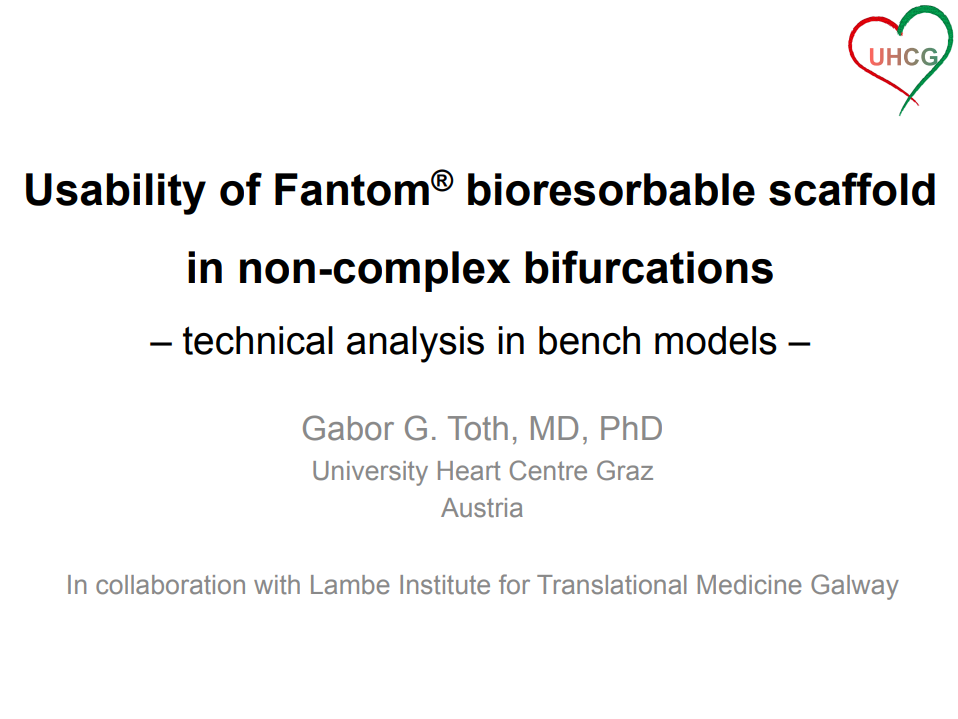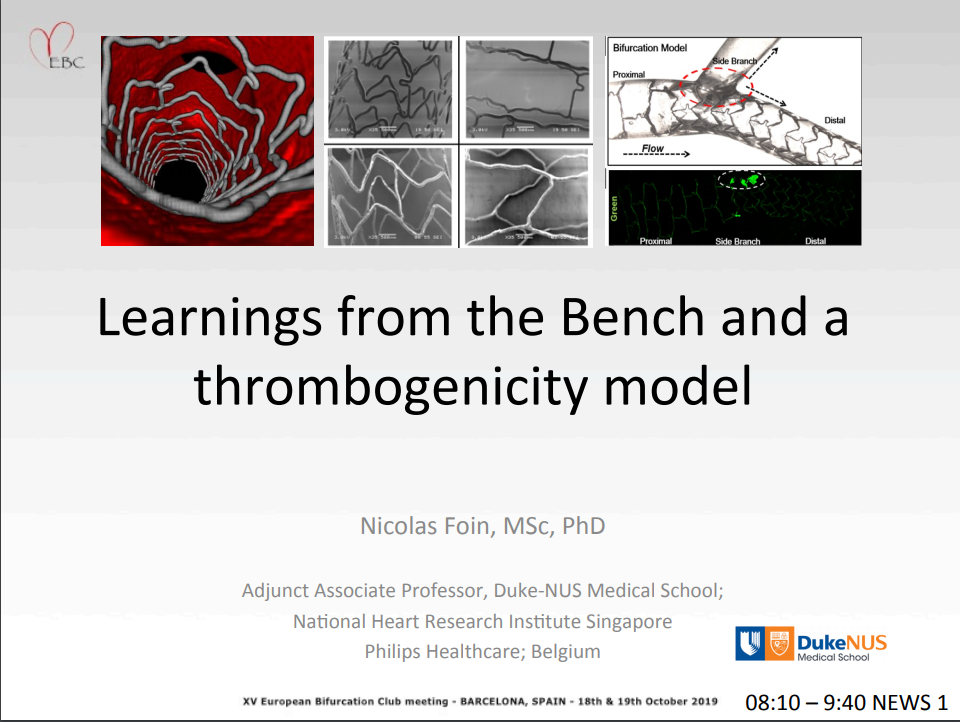Stop DAPT2 High Bleeding Risk sub analysis
European Bifurcation Club 2019, EBC 2019 - Barcelona, Spain NEWS 1 STOPDAPT2 HBR Bifurcation. 1 Year outcomes from a Randomized Trial of Clopidogrel Monotherapy VS DAPT Beginning 1 Month After PCI in Patients at High Bleeding Risk Author: Hirotoshi Watanabe, MD, Kyoto University Hospital, Japan LIMITATIONS Post-hoc, and underpowered analysis. Precise ARC-HBR could not be applied. Very few patients participated in this study with 2-stents for bifurcation. Japanese patients are known to have lower ischemic risk and higher bleeding risk compared with US/European population CONCLUSION The effects of 1-month DAPT versus 12-month DAPT on the primary and major secondary endpoints were consistent in HBR patients and any bifurcation strategy without any significant interactions. One-month DAPT was associated with significant reduction of major bleeding without any increase of cardiovascular events in HBR patients, and the absolute magnitude of bleeding events with 1-month DAPT was numerically greater in HBR patients than in non-HBR patients, although the analysis was underpowered and needed confirmation in future studies. In this study very few patients with complex PCI for bifurcation participated, but there was no sign 1-month DAPT significantly increased the coronary-related events




